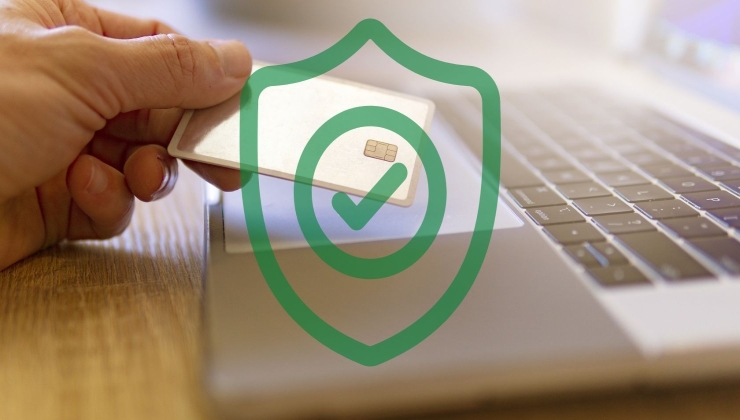Payment security risks range from financial fraud to identity theft. According to a 2022 Nilson Report, card losses could exceed $165 billion over the next decade. A TransUnion study also shows that fraudulent digital transaction attempts have increased by 46% since the pandemic.
Despite these statistics, those who know how to assess and navigate the risks can keep their money safe. Below is an overview of the most secure payment options for each payment category, as well as a look at the risky options you should avoid whenever possible:
Digital Wallets (PayPal)
Digital wallets are the leading eCommerce payment method in North America, accounting for nearly a third of all online transactions. The most popularly used are PayPal, Apple Pay, Google Pay, and Venmo. Digital payment options offer multiple security layers, including encryption technology, passcodes, multi-factor authorization, biometric security, and tokenization.
Technologies like tokenization replace sensitive card information with a single-use token for the transaction. Even if someone intercepts the token, they won’t be able to use it because of the fast expiration time. The token also lacks personal information.
PayPal leads the digital wallets, representing 12% of all online non-grocery retail purchases, compared to just 3% for Apple Pay. The payment method is prevalent among real money gamers and bettors. You can find PayPal betting sites built around the payment method as a key selling point. Such betting sites allow users to fund their accounts with and withdraw winnings to their PayPal address.
PayPal transactions are super-fast and secured using advanced features, including data encryption, browser integrity checks, security keys, fraud monitoring, purchase protection, and seller protection. Transactions also only require an email address, so users don’t have to give up sensitive details to eCommerce sellers and sportsbook operators.
Cards Payments (Credit Cards)
Before digital wallets, credit cards were the most popular payment methods. They remain the second most popular online payment method, with the average American holding up to four different cards. Credit cards also offer heightened security against fraudsters and hackers.
The top security features include encryption and fraud protection. Credit card users are also protected by federal laws and cannot be liable for more than $50 during a fraud incident. Some credit card providers like Citi Simplicity offer $0 liability on unauthorized charges.
Credit card users can also sign up for ID theft protection programs offered by Mastercard and Visa. In recent times, credit card providers have created a new way involving virtual card numbers to protect customers shopping online. The numbers are generated randomly and are merchant-specific. Users can lock, unlock, and delete them whenever they want.
Credit cards can also be used for safe in-person payments. The most secure options include contactless tap-to-pay credit cards that use near-field communication (NFC) technology and tokenization to prevent counterfeit cards. Chip-enabled credit cards with PINs and tokenization offer another secure alternative.
ACH and eChecks
Automated Clearing House (ACH) and eChecks offer secure payment methods that go through trusted clearinghouses. ACH is a federally regulated electronic network designed to facilitate money transfers between banks. All banks in the US can access ACH payments.
To make ACH payments, you must have a bank account and a routing number. You can then access your bank online and authorize a transaction. An example of an ACH transaction is a direct deposit paycheck. ACH payments are protected by strict regulations enforced by the clearinghouses and usually feature low fees.
Electronic checks (eChecks) are similar to ACH and may use the same networks and clearinghouses. However, eChecks are digital versions of the conventional check used for one-time expenditures, which can result in higher fees. ACH payments tend to be used for recurring expenses like rent.
E-checks are more secure than physical checks and can benefit from advanced encryptions and safety protocols established by ACH. The checks can’t be lost or stolen. Users also have the option to reverse payments if they receive notifications for unauthorized transactions.
Risky Payment Methods to Avoid
No single payment method is 100% proof because a lot hinges on users’ ability to protect their information and devices from unauthorized access. However, some payment options carry more risk. Cash is seen as the riskiest payment method because it can be easily lost or stolen.
Tracing cash is also harder, and no warranties or purchase protection are available. Moreover, you’ll miss out on the chance to leverage credit card rewards and loyalty points. Debit cards are more secure than cash but carry significant risks compared to credit cards and digital wallets.
Debit cards can give fraudsters direct access to funds in your bank account, exposing you to overdraft fees and hold charges. You may also be liable for funds lost to unauthorized transactions. Physical checks are another option you should try to avoid, especially with the option of eChecks and bank wire transfers.
Conclusion
Paying money online or in person can expose you to various risks, including malicious actors and viruses. Digital wallets, cryptocurrencies, credit cards, and ACH payments mitigate most of the risks involved in online purchases.
However, users still have a responsibility to safeguard their accounts. Choosing trusted payment providers, using secure internet connections, and keeping banking information private can help reduce the chances of fraud.

